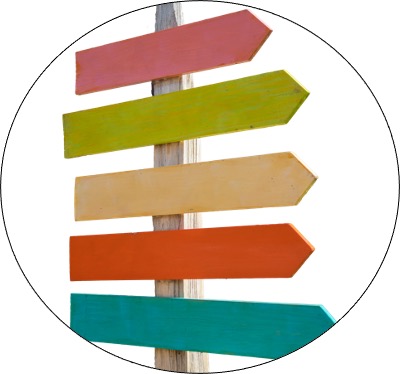Purpose
Having developed a deep understanding of your audience or community, you now need to decide what really matters and where you will focus your enquiry and resources. Which audiences do you want to serve better? You may need to define with greater precision which target group/s are most important to you.
Importantly, you will need to describe the key “problem” this group has engaging with your organisation. By now, you may have a lot of information. Decide what problems and barriers must be overcome to build a meaningful new experience and lasting relationships. Problems could relate to a whole audience journey or just a key part of it – like the creative experience, communications, ambience and environment.
The clearer you can be, the more meaningful your experimentation will be. Even if the problem is complicated or “wicked”. This us a phase of ”convergent thinking” - focusing in on what matters to your audiences, to your organisation. Designers call this this “the problem definition” or the”design brief”.

Actions
Working together in your task force, workshop the following actions.
- Decide which target group and persona you will concentrate on. What are the important criteria? Choose a group that is really important to you organisation, that is distinct with needs and interests you have understood, who you can reach, and for whom you could create a meaningful experience.
- Review the persona representing this group. Add in new details. Think about presenting them in an interesting way so that everyone in your organisations can get to know them
- Working as a group, decide which factors are really critical for your target group. Where possible, involve those people in this conversation.
- Capture this thinking in a User Needs Statement - "PERSONA X needs to (VERB...) in order that (IMPACT that makes a difference to your persona) - see the tool.
- Thinking about these factors, you could also form a/some How Might We... questions which can act as the trigger for you design ideas. See the canvas.
Statementts and questions can be both broad and specific but could have a number of answers, such as:- How might we make the experience more affordable?- How might we make it seem less risky and unfamiliar?- How might we reflect young people interests?You might come up with several – that’s ok. Again, decide together on the most important ones. to help you build your question. - Capture your main How Might We... question/s.
By the end...
You will have agreed a User Needs Statement and/or a How Might We question which forms an inspirational and motivating brief for design of new experiences that will make an all-important difference to your target group.
Organisational learning
In this stage, you will learn which audiences are critical to the future of your organisation and why. Most importantly you will have prioritise the issues the organsieion will need to focus on addressog now and in the future. Make sure to share the conclusions you reach widely across the organisation.
Audience & Community Insights
You will have a long list of issues important to this group – you may not be able to address them now but document them for the future.

